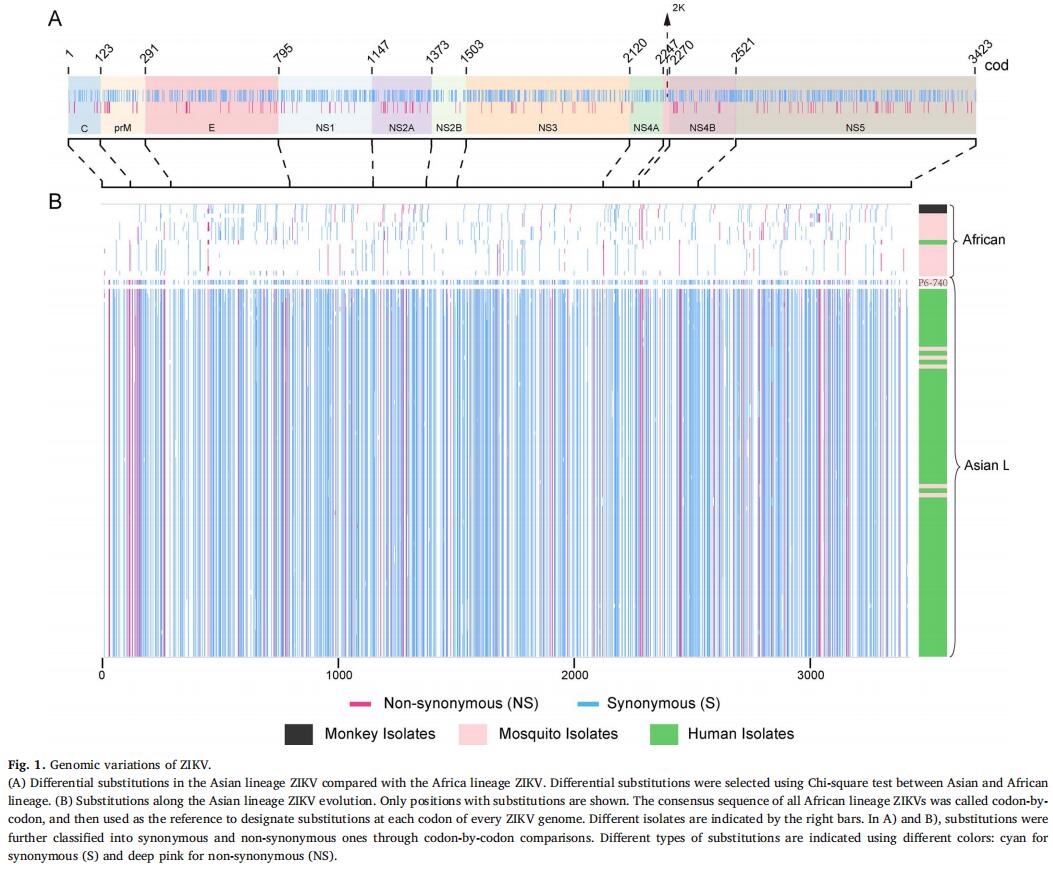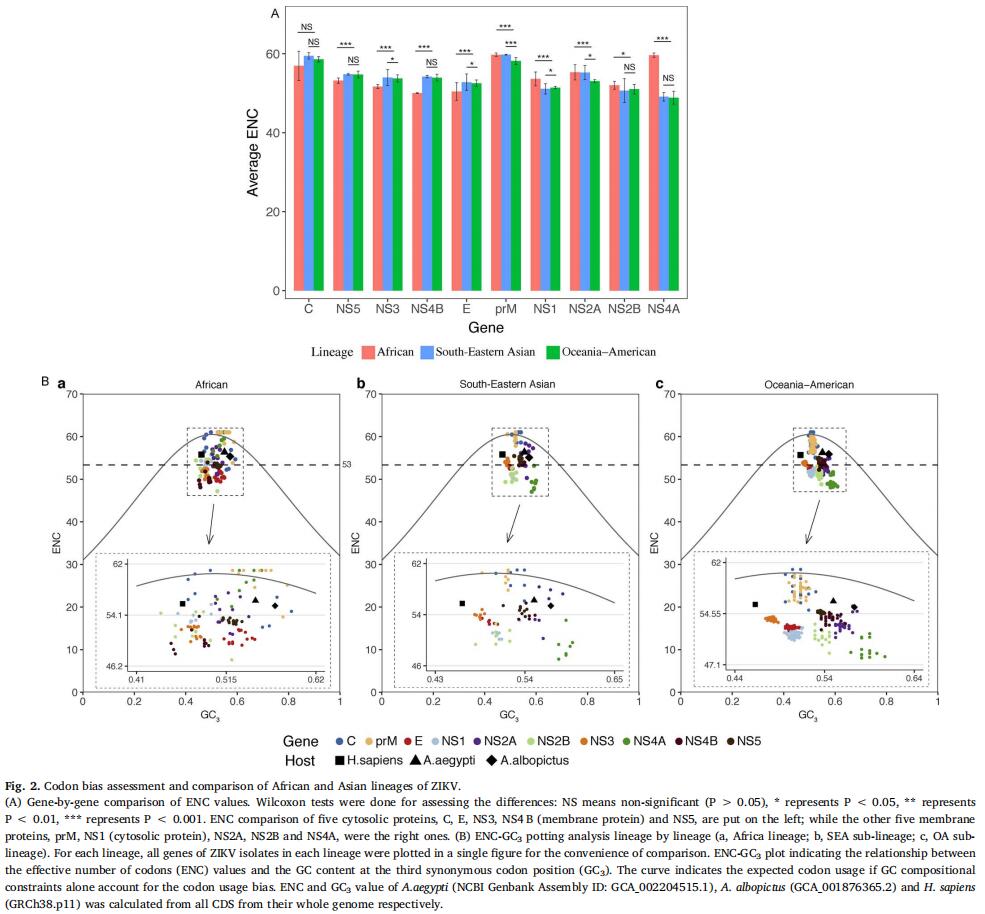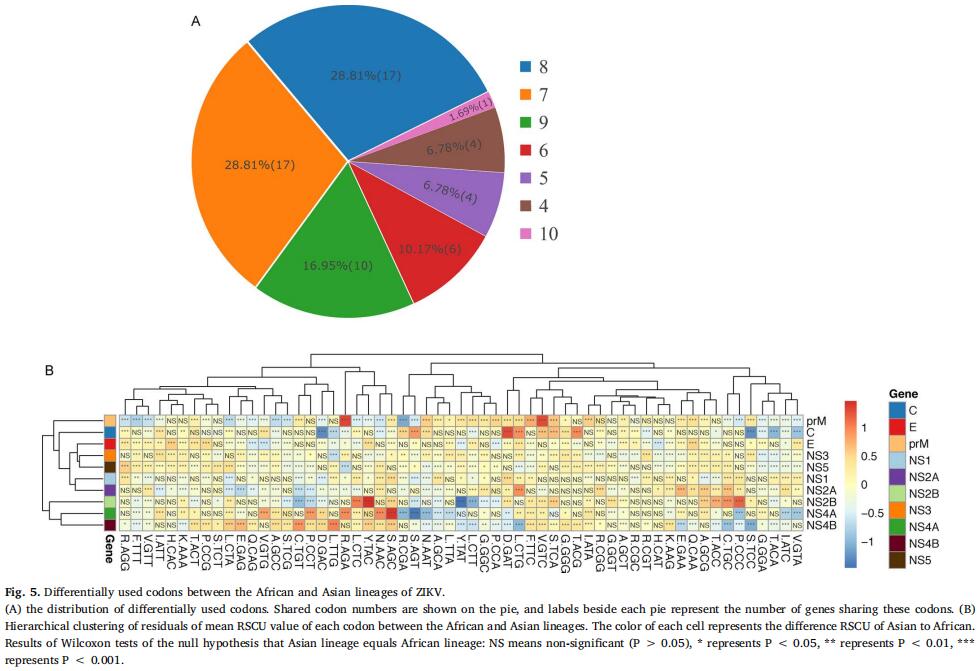Dechun Lin, Liqiang Li⁎, Tian Xie, Qingqing Yin, Nitin Saksena, Rangke Wu, Wanyu Li, Geyang Dai, Jinmin Ma⁎, Xiaohong Zhou⁎, Xiaoguang Chen⁎
ABSTRACT
A comprehensive demonstration of Zika virus (ZIKV) molecular evolution is essential for understanding its adaptation and expansion in its recent pandemics. Despite several studies on mutations and codon usage in ZIKVs, the variations in codon usage patterns across individual genes and their biological implication remains unclear. Here, we performed a gene-by-gene comparison of the codon usage variation in ZIKVs of the African and Asian lineages. We found that besides the evidence of positive selection (Ka/Ks > 1) in the Asian lineage of the ZIKV genome, codon usage patterns were gene-specific and codon usage variation of ZIKV genes, was possibly constrained by their individual functional features, such as transmembrane domains, or antigenicity. In parti cular, the NS2B and NS4A genes showed distinct codon usage patterns, clearly separating them from the clusters of other genes in the correspondence analysis (CA). In the Asian lineage, the NS2B and NS4A genes showed the highest codon usage bias (ENC values: 51.01 ± 0.72 and 48.89 ± 0.99 respectively), and were subjected to the highest translation selection (ENCobs/ENCexp ratio: 0.847 ± 0.0297 and 0.828 ± 0.0233 respectively) in comparison to the African lineages of ZIKV. The CpG frequency of the NS2B showed a gradual ascending trend in the Asian ZIKV lineages, while in NS4A it was constrained along with the expansion of the Asian lineage. Furthermore, between the African and Asian lineages, differentiated and specific over-represented codons were more prominent in the NS2B and NS4A. Together, our study implies that ZIKVs are in the process of evolutionary fine tuning their codon as seen in the recent pandemics, and NS2B and NS4A could have played a potential role in the molecular evolution of the Asian lineage and their establishment.
DOI : https://doi.org/10.1016/j.virusres.2018.01.014


